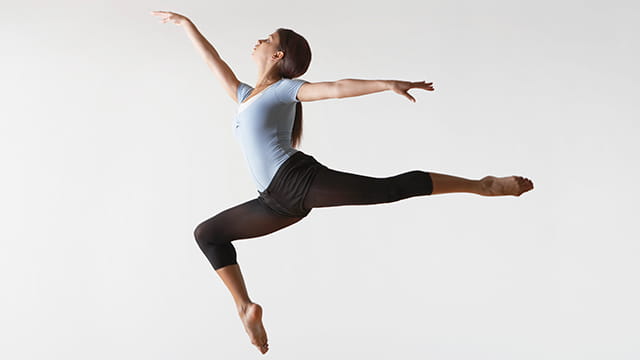Ballet and Back Problems: Study Reveals High Rates of Idiopathic Scoliosis Among Elite Ballerinas
July 28, 2025 - Katie KarlsonFemale ballet dancers disproportionately have idiopathic scoliosis, according to a new Houston Methodist Hospital study that concludes there is a need for more screening and evidence-based interventions early in ballerinas' careers.
The study, conducted in the Department of Orthopedics and Sports Medicine, found that more than 1 in 5 female participants exhibited spinal curvatures — more than triple the rate of male participants and more than double the rate of the general female population. Study participants came from the Houston Ballet.
"Our research uncovers a critical link between the intense physical demands placed on young ballerinas and the structural development of their spines," said Dr. Comron Saifi, the C. James and Carol Walter Looke Chair in Orthopedic Spine Surgery and the study's primary investigator. "The unique combination of early-age training, low body fat and biomechanical stressors appears to significantly elevate the risk of scoliosis."
Dr. Saifi said the ballet could benefit from safeguards similar to pitch limits implemented in baseball to prevent injury. He said safeguards might significantly reduce the long-term impact on female dancers' spinal health.
Idiopathic scoliosis, defined as a spinal curvature greater than 10 degrees, most commonly emerges during adolescence in girls. In ballet dancers, it can present performance challenges and increase risks of injury as well as lead to post-career pain, reduced flexibility and musculoskeletal issues.
The study, published in June in the Journal of Bone and Joint Surgery, involved a retrospective analysis of data collected from 98 Houston Ballet dancers — 49 women and 49 men — during routine physical exams between 2017 and 2022. The mean ages were 25 for the men and 27 for the women.
Dr. Saifi's team utilized advanced imaging techniques — including dual-energy X-ray absorptiometry (DXA) scans — to comprehensively evaluate spinal curvature, bone density and body composition.
The study found that while 20.4% of the women had idiopathic scoliosis, only 6% of the men had the condition, consistent with such norms in the male population.
The research leverages Houston Methodist's close partnership with the Houston Ballet and represents a deep commitment to understanding and addressing musculoskeletal disorders in high-performance athletes. Dr. Saifi noted in the study that idiopathic scoliosis in professional ballet is understudied.
Dr. Saifi's team identified several distinct physiological markers among female subjects with scoliosis that were not observed in dancers without scoliosis. These markers include lower fat mass and distinct skeletal dimensions, such as longer trunks and wider shoulders and hips. These findings suggest that anatomical and physiological traits common in professional dancers might predispose them to spinal curvature.
Despite limitations inherent in supine imaging — typically underestimating curvature — the study still identified a high prevalence, suggesting even greater risks in standard standing evaluations.
"With DXA scans, the subjects are lying flat on the machine, making it harder to detect scoliosis due to the lack of gravity on the spine," Dr. Saifi said. "It is likely that within our study, the percentage of ballerinas with scoliosis is probably even higher than 21% and the magnitude of their curve is probably a lot more than the DXA scan captured."
Notably, the research sets an initial benchmark in spinal health assessment for ballet performers which could be instrumental in future studies.
It also highlights the lack of information on the prevalence of adolescent idiopathic scoliosis and the importance of identifying specific risk factors for developing it. It suggests that further studies should be conducted on the impacts of beginning intense ballet training at an early age.
"Ballet is an extraordinary art form," Dr. Saifi said. "Our responsibility as physicians is to preserve dancers' musculoskeletal health, so their careers can be both distinguished and sustainable."


